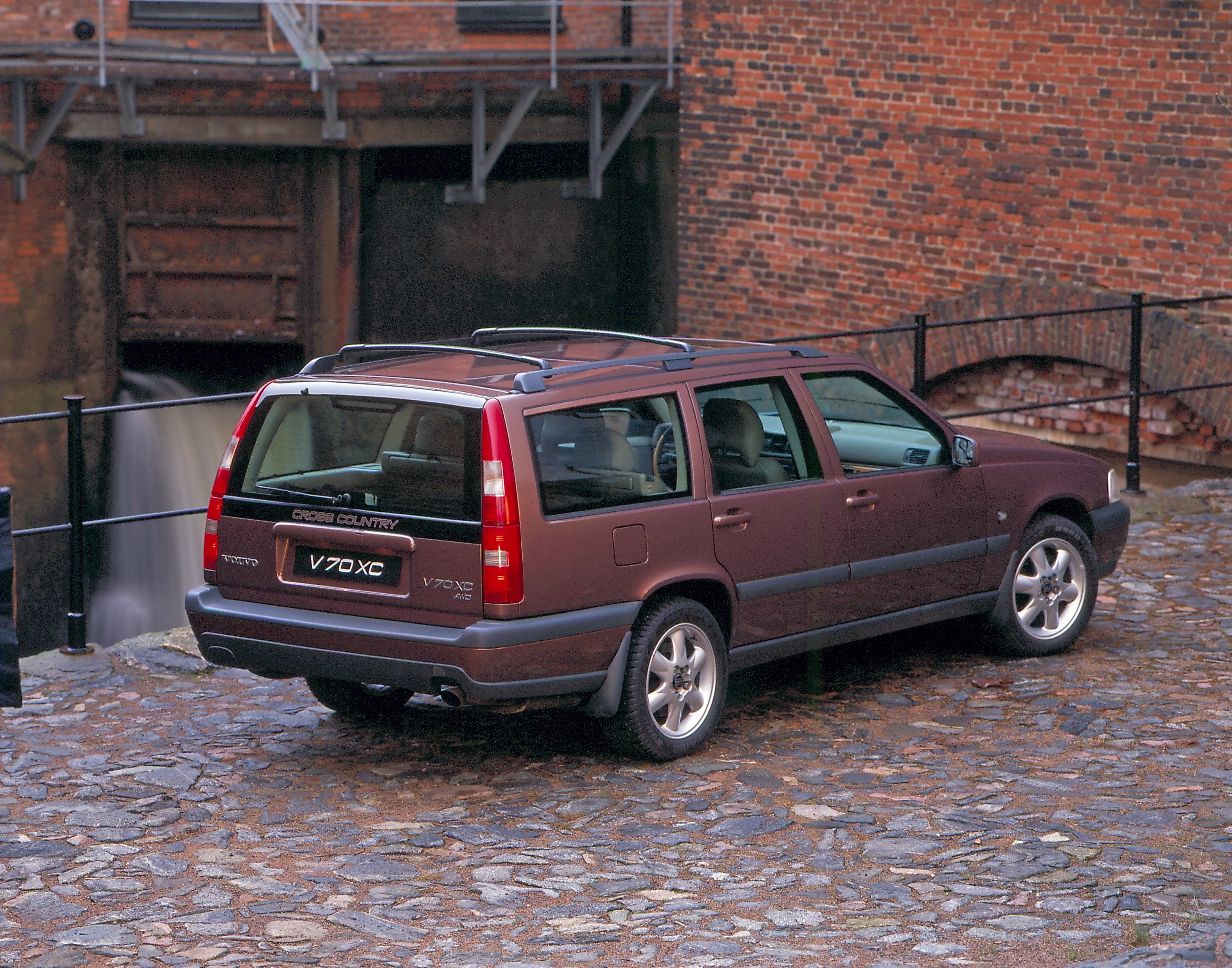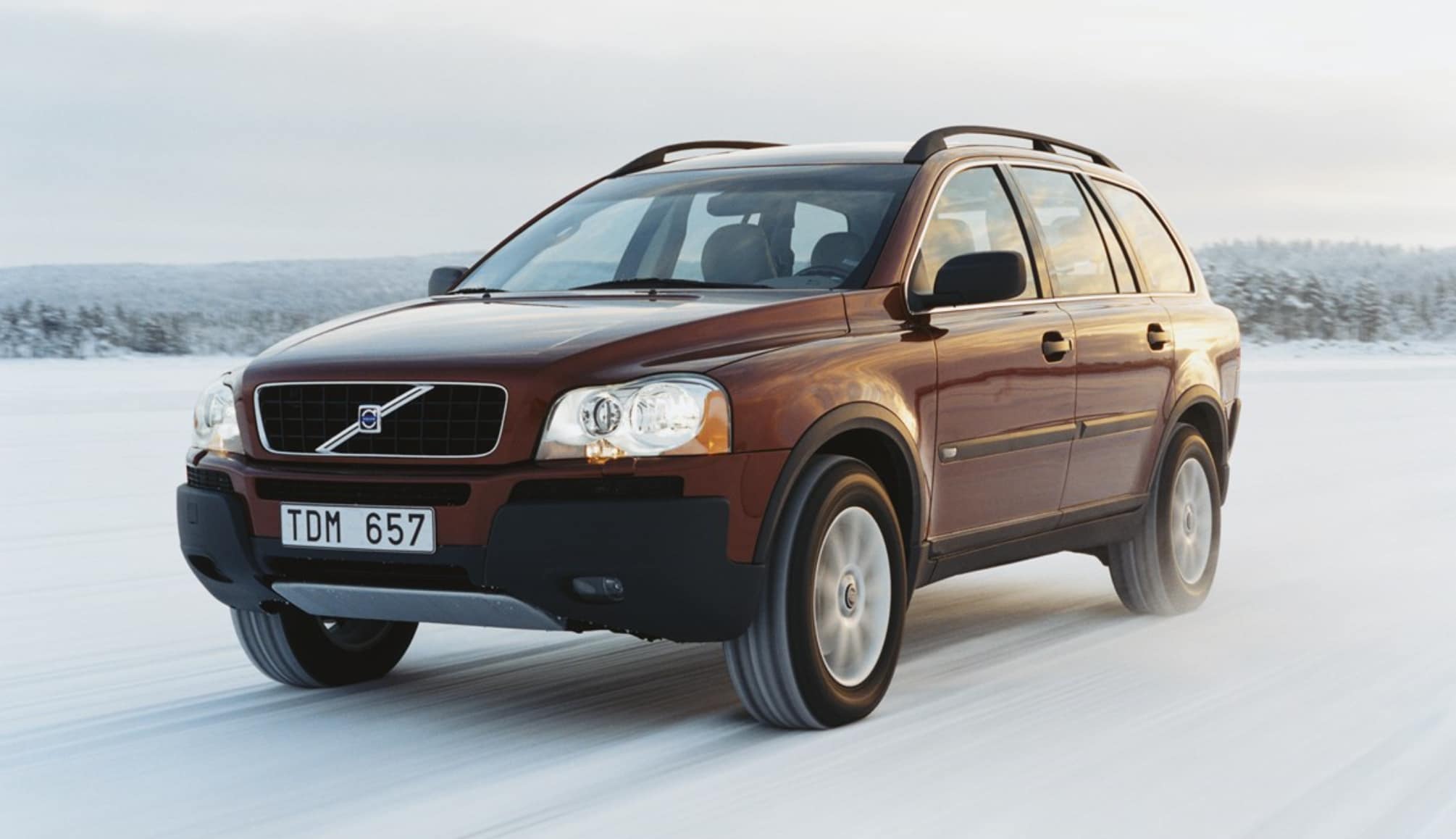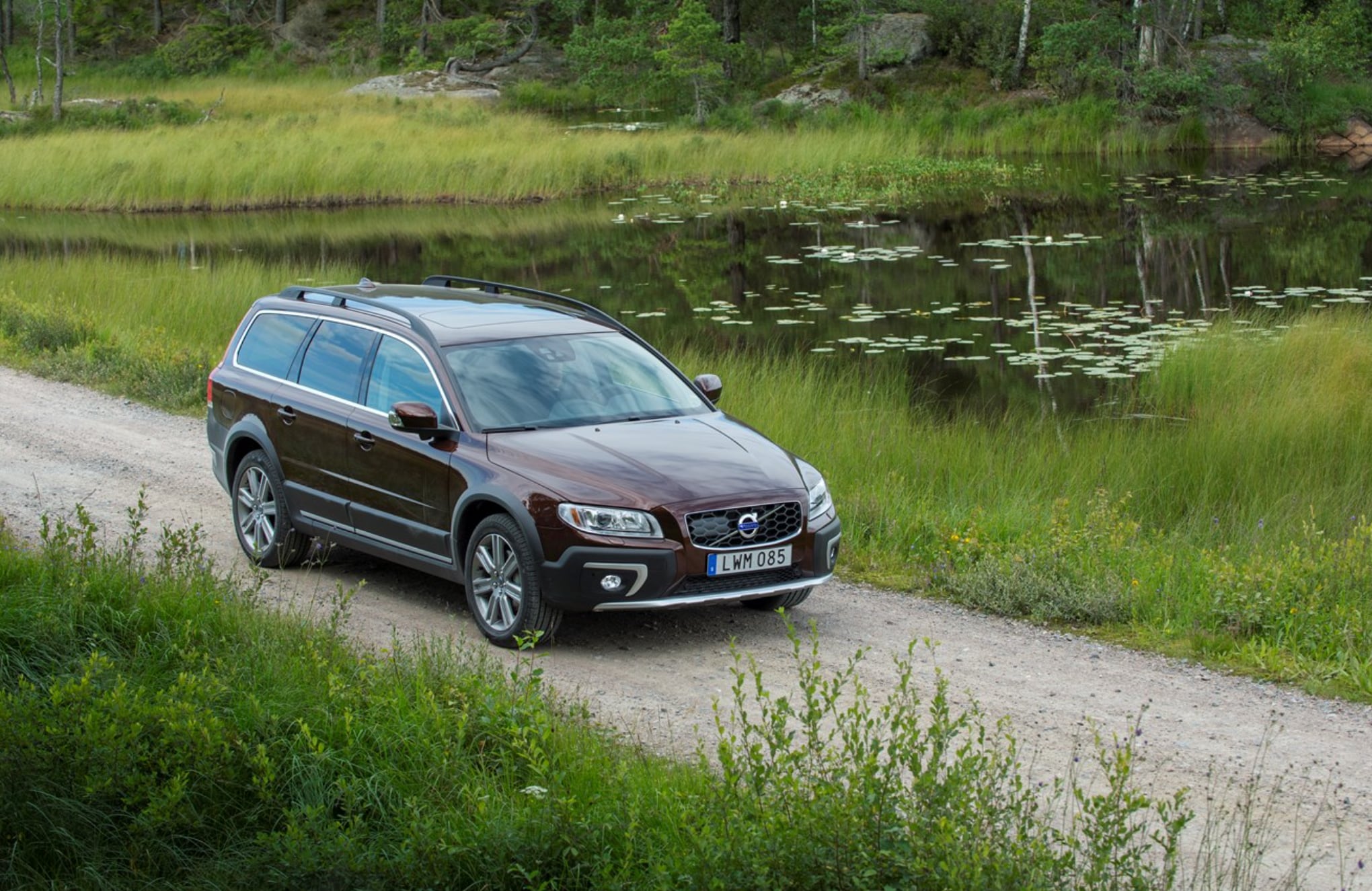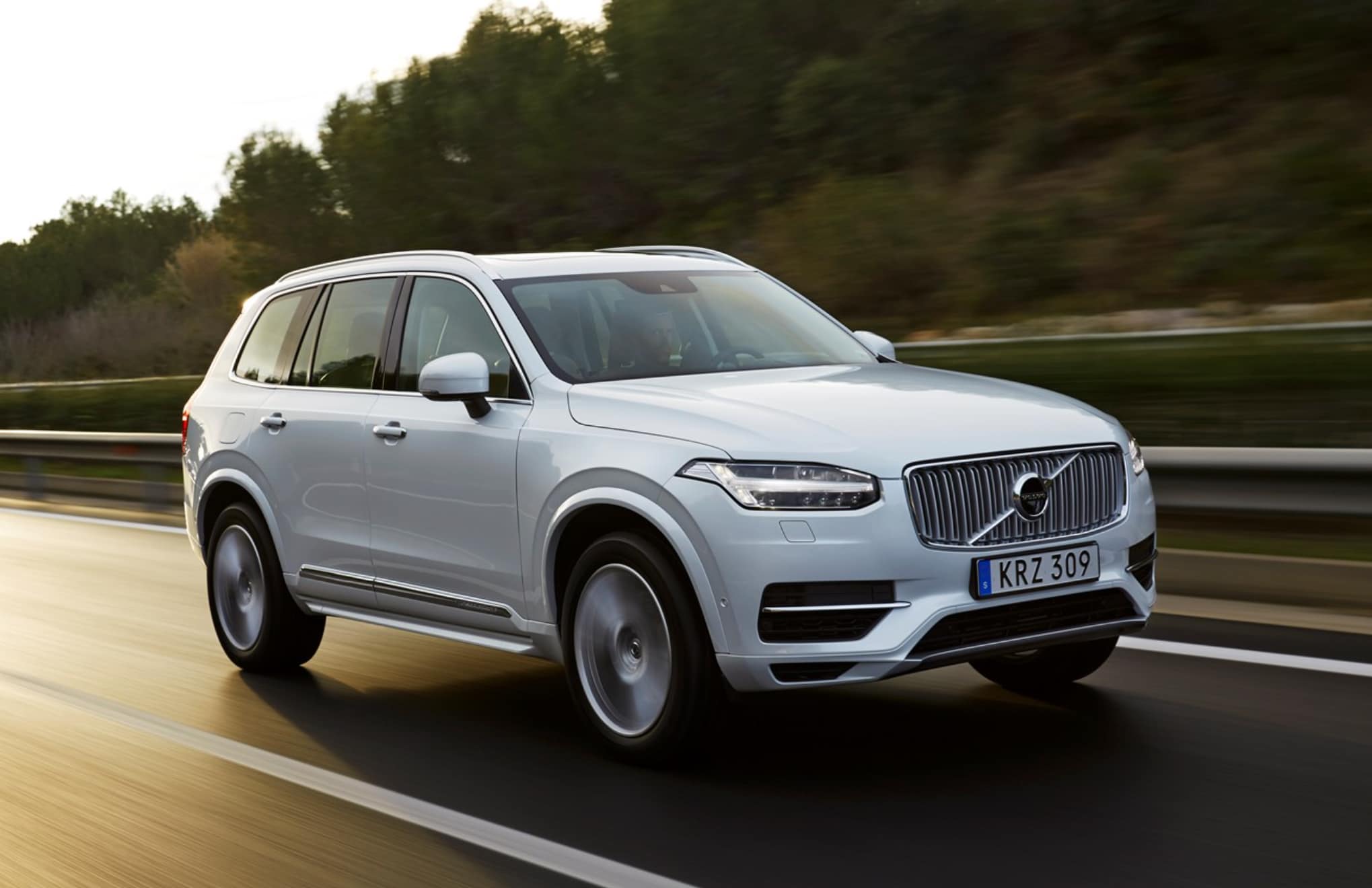
Its
been more than two decades since the V70 XC began a new era of
all-wheel-drive wagons and SUVs that could take owners where no Volvo
had previously taken them before.
In 1997, a new type of Volvo
allowed its owner to go wherever they wanted, regardless of conditions,
thanks to its raised ride height, extra body protection, and all-wheel
drive system. And the famous lineage of that V70 XC model
continues 20 years later, with Volvo's renowned XC SUVs and Cross
Country vehicles, capable of seeking new adventures on the road and off
the beaten path.

1996 Volvo 850 AWD
The
Volvo 850 was groundbreaking in many ways – and not only was it the
brand’s first front-wheel-drive model, but in 1996 it became the first
to power all four wheels. The 850 AWD permanent all-wheel-drive system
was automatic – no buttons to push, no levers to pull – as it reacted
mechanically to any wheel slippage by distributing power between the
front and rear axles as required to provide enhanced traction. It was
beneficial in scenarios such as towing off-road, wet-weather cornering,
or getting underway on a hill. For better fuel efficiency, the 850 AWD
was predominantly (95%) front-drive in freeway driving.

1997 Volvo V70 XC
In
1997, the 850 wagon-based V70 carried the system across for its R AWD
model, and the same year saw the introduction of an even more notable
variant: the Cross Country, which would become better known from its
badge as the V70 XC. A more adventurous design promised just that –
with additional lower-body protection and increased ground clearance to
give its owners the capability to traverse trickier trails away from
the asphalt. The model – which became the XC70 in 2003 – was a more
aerodynamic, more efficient alternative to SUVs.

2002 S60 and XC90
In
2002, the S60 mid-sized sedan became the first Volvo to use a
faster-acting, electronically controlled all-wheel-drive system –
co-developed with Swedish specialist Haldex. It also slotted under
Volvo’s first ever SUV, the XC90, later the same year – as an option on
the 2.5-litre turbo petrol and standard on the six-cylinder T6. The S60
AWD and XC90 powered the front wheels in normal driving, though the
electronic AWD system constantly monitored wheel slippage – negating it
on looser surfaces instantaneously by sending drive to the rear axle.

2003 XC70
Introduced in 2003, the second generation XC70 received major upgrades, including better ground clearance at 8.2 inches (210 mm), thanks to raised suspension, and unpainted bumpers and fender extensions, which distinguished it from the V70. All XC70s featured AWD and the engine and gearbox choices were limited to only the 2.5L low pressure turbo with a 5-speed automatic for North American markets, and a diesel variant was available elsewhere. For 2003, the model was renamed the XC70.

2008 XC70
In
February 2007, a third generation XC70 was debuted. Based on the P3
platform, it shared numerous features as well as general styling with
the second generation S80 sedan. Compared with its predecessor, rear
legroom was increased by more than 3/4" (2 centimeters) and a revised
tailgate design increased the cargo area volume by 55 L. After model
year 2011, the V70 variant was discountinued in North America, where
the XC70 was more popular, although a FWD version of the XC70 was
available. 2012 saw a minor facelift, including the introduction of the
Sensus Infotainment System from the XC60, redesigned side mirror
indicators, chrome bumper accents, and rear light clusters.

2008 XC60
2008
saw the introduction of a completely new vehicle - a compact luxury SUV
called the XC60. Based on the 2007 XC60 concept vehicle, which was
unveiled at the 2007 North American International Auto Show, the first
generation XC60 was based on Volvo's P3 platform, and shared technology
with the Land Rover Freelander. At the time both Volvo and Land Rover
were owned by Ford, and development was split between the two
subsidiaries. In 2010, an R-Design variant was introduced, featuring a
color-matched body kit, stiffer chassis and damping, and other unique
trim items. 2013 saw a refreshed version of the XC60 (to be released in
the 2014 model year). Exterior updates brought changes to the grill,
front driving lights, elimination of black cladding along the lower
doorsills, and minor changes to the exhaust tips and taillights.
Interior updates included new materials and dashboard trims, available
paddle shifter on the T6 model, and introduction of a 7" touch-screen
display.

2015 XC90 T8 Twin Engine
As
the original XC90 was a landmark vehicle in the SUV segment, it was
only fitting that its successor would make its own mark. That included
new hybrid drivetrain technology for the flagship T8 Twin Engine,
debuting a different style of all-wheel drive whereby the front wheels
are powered by a supercharged/turbocharged petrol engine while the rear
wheels are propelled by an electric motor.

2017 V90 Cross Country
2017
saw the release of the spiritual successor to the original V70 XC. The
V90 Cross Country brings familiar off-road capability, yet this
sophisticated wagon blends it with unprecedented levels of comfort,
luxury and technology for those seeking a more experience-based
lifestyle. You could say it’s a 20-year measure of how Volvo Cars has
evolved to become one of the world’s fastest-growing luxury car brands.

2017 XC60
The
second generation XC60, based on Volvo's new Scalable Product
Architecture (SPA) platform, was unveiled at the Geneva Motor Show.
This was the first 60-series model in its generation and the first
since Volvo's purchase by Geely. It shares the platform with the
current generation S90, V90, and XC90. As part of Volvo's move toward
smaller, more efficient engines, the new model uses only four-cylinder
engines in various configurations, ranging from a 251hp turbocharged T5
to a 316hp T6, which is both turbo and supercharged.

2019 V60 Cross Country
In
2019 we'll see the launch of the V60 Cross Country, a 5-door, 5-seat
mid-size wagon which takes the elegance of the V60 and transforms it
into an all-road estate that delivers safety, practicality, comfort and
performance in a capable and adventurous package.
“With
the new V60 Cross Country, we take our Swedish family estate from one
natural habitat to another,” said Håkan Samuelsson, president and chief
executive of Volvo Cars. “We invented the Cross Country segment over 20
years ago and with this car, we reinforce our long-standing pedigree in
safe, capable and versatile family cars.”